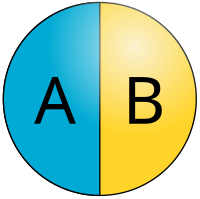
Photo from wikipedia
Self-assembled alkane layers are introduced between graphene layers to physically block nanometer size defects in graphene and lateral gas pathways between graphene layers. A well-defined hexatriacontane (HTC) monolayer on graphene… Click to show full abstract
Self-assembled alkane layers are introduced between graphene layers to physically block nanometer size defects in graphene and lateral gas pathways between graphene layers. A well-defined hexatriacontane (HTC) monolayer on graphene could cover nanometer-size defects because of the flexible nature and strong intermolecular van der Waals interactions of alkane, despite the roughness of graphene. In addition, HTC multilayers between graphene layers greatly improve their adhesion. This indicates that HTC multilayers between graphene layers can effectively block the lateral pathway between graphene layers by filling open space with close-packed self-assembled alkanes. By these mechanisms, alternately stacked composites of graphene and self-assembled alkane layers greatly increase the gas-barrier property to a water vapor transmission rate (WVTR) as low as 1.2 × 10-3 g/(m2 day), whereas stacked graphene layers generally show a WVTR < 0.5 g/(m2 day). Furthermore, the self-assembled alkane layers have superior crystallinity and wide bandgap, so they have little effect on the transmittance.
Journal Title: Nano letters
Year Published: 2022
Link to full text (if available)
Share on Social Media: Sign Up to like & get
recommendations!